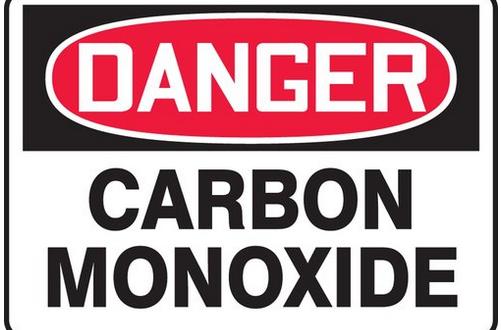
Protections Against Carbon Monoxide
Carbon monoxide (CO) is a deadly gas that is difficult to detect because it is odorless and invisible. As a result, it is know as the “the silent killer.”
According to the CDC, 430 people die and nearly 50,000 CO exposures occur each year resulting in trips to the Hospital.
CO is produced by fuel-burning appliances and equipment in our homes. If you have heating, cooking or power equipment that uses fuels such as oil, natural gas, coal, wood, propane, gasoline, etc., then your home is at risk for potential CO poisoning. Homes with attached garages are also at risk, because vehicles left running in the garage can cause CO to seep into the home.
CO poisoning can be prevented by proper care and use of household equipment. CO alarms can provide early detection if CO leaks or accumulation occurs. Both are important for your safety.
- If you suspect CO poisoning in your home, call the appropriate responding agency, usually your local fire department or 9-1-1. Keep all emergency response numbers posted by every telephone.
- CO alarms are different from smoke alarms, and have different functions. CO alarms do not provide early warning of a fire. Smoke alarms do not provide early warning of CO exposure. Your home needs both CO and smoke alarm protection.
Symptoms of CO poisoning are similar to symptoms for the flu, and can include headache, dizziness, nausea and shortness of breath. To distinguish between symptoms of flu and CO poisoning – if you feel better after leaving home and then worse again when you return, it may be CO exposure causing the symptoms. If your CO alarm sounds check to see if it is plugged in properly, or if battery-powered, check the battery to be sure the device is operating. If you suspect that CO is leaking in your home, follow these steps from the Home Safety Council:
- Open windows and doors to ventilate the rooms, or in severe cases of CO exposure, evacuate the home.
- Call to report that you suspect CO is accumulating. Usually the appropriate agency to call is the fire department or 9-1-1.
- Seek immediate medical treatment for anyone who has severe symptoms.
- Follow the advice of the responding agency before re-entering your home, and quickly obtain repairs as needed.
Being prepared for winter weather (just like all weather) starts at home:
“BE AWARE – BE PREPARED – MAKE A KIT”
Visit Ready.Gov for more information
Leave a Reply